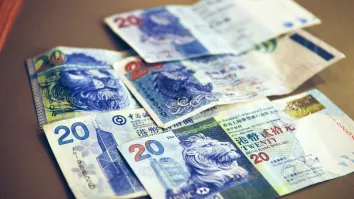When diamonds aren't forever
By Angelina ChenGone are the days when selling jewelry was a consequence of one of the three Ds: Divorce, Death or Debt. Today’s savvy consumers appreciate the financial and practical rewards of selling unwanted, unworn or outdated jewels and watches.
Rather than have old-fashioned brooches, dated pendants or luster-losing baubles gathering dust, women see value in trading their jewelry for cash.
Hong Kong women have a great sense of changing trends and are always ready to embrace new fashion. Increasingly, they are selling their jewelry to replace their pre-loved items with more contemporary pieces.
Given the growth of this sector in Hong Kong, it’s expected China consumers will also embrace this lifestyle trend.
Up to 65% of our clients are women over 40, although there is a market segment comprising men who want to sell their watches and trade up to a more fashionable timepiece or brand.
No longer the domain of pawn shops, the pieces submitted for evaluation range from a single earring or Rolex watch to a custom-designed diamond necklace.
Jewelry certainly reflects fashion trends and wearing outdated jewelry diminishes an otherwise stylish look. There are very few truly timeless pieces of jewelry because fashion changes so quickly.
Items that can be categorized as ‘timeless’ generally fall into the objet d’art category and include antique pieces from Cartier, Van Cleef & Arpels or Tiffany & Co.
High-end vintage jewelry holds appeal to Chinese collectors, especially since the major jewelry houses have been showcasing their heritage lines. But these are limited to the era from the 1900’s to 1930’s.
Vintage jewelry from the 1960’s and ‘70’s, however, don’t have the same cachet and many of our clients prefer to sell these pieces rather than keep them.
We recommend women assess their jewelry collection and question how often they wear each piece. If it hasn’t been worn in over a year, chances are it will never be worn again. We also have a number of clients who trade in their jewelry as part of a “karma cleanse.”
If an item evokes unhappy memories, or recalls a bad relationship, it can be very cathartic to trade it in and replace it with a piece of jewelry that represents a fresh start.
Sellers are likely to receive higher prices if they can produce the original box, papers and jewelry pouches. Obviously signed pieces often retain more value than unsigned pieces and certifications from internationally recognized authorities are certainly helpful.
Selling jewelry no longer has a stigma attached to it. Instead, selling has become a chic and accepted practice. Knowledgeable Hong Kong consumers are recognizing the financial value of trading in unwanted or outdated pieces.
These days, clients aren’t selling because they have to, but rather because they choose to.




















 Advertise
Advertise






